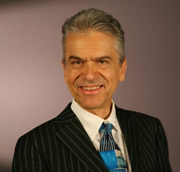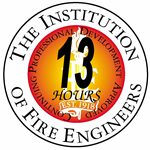

| About | |
| Programme | |
Venue/Accommodation |
|
| Registration | |
| Interflam 2013 | |
Discounted
fee for Interflam Delegates |
|
|
Principles
of Electrical Fires and Explosions 2 Day Short Course |
|
Conferences |
27th
- 28th June 2013 |
DAY
1 |
|||
| •
What is an electrical fire? • Statistics on electrical fires • Fundamentals: Ohm’s Law, sine waves, simple circuits, energy-storing components (inductors, capacitors) • Energy sources: Static electricity, electric current • Electrical discharges (all types, applicable both to static electricity and electric current) |
|||
| • Breakdown phenomena | |||
| • Paschen’s Law (air) | |||
| • Dielectric strength of solid insulators | |||
| • Definitions of arc and spark | |||
| • Spark ignition of flammable atmospheres | |||
| • Types of discharges under steady-state conditions (i.e., with electric current flow, not for static electricity) | |||
| • Ignition modes involving electric current | |||
| • Sparking or arcing in the gas phase | |||
| • Arcing across a carbonized path | |||
| • Glowing and other forms of overheating (ohmic heating | |||
| • Ejection of hot particles | |||
| • Miscellaneous phenomena | |||
| •
Time for fire to initiate from a defect • Static electricity |
|||
| •General principles (charge separation, accumulation, discharge) | |||
| •Means whereby charge separation occurs | |||
| •Types of discharges | |||
| •Electrostatic charging and discharging of solids/ persons and apparel/ granular materials/ liquids | |||
| • Lightning | |||
| •Electrical characteristics | |||
| •Ignition from lightning | |||
| •
Other atmospheric discharges (St. Elmo’s fire, ball lightning) • Electromagnetic waves and particulate radiation |
|||
| •Radio transmitters, eddy currents, dielectric heating | |||
| • Minimum energy requirements for ignition | |||
| •Gases/ Dust clouds/ Liquids/ Solids | |||
| • Are there minimum values of voltage, current, or power that must be exceeded for ignition to be possible? | |||
| • Problems with wiring devices | |||
| •Wiring in 120 and 240 VAC branch circuits | |||
| •Electric outlets, plugs, and connections | |||
| •Busbars, switchboards, panelboards | |||
| •Insulated distribution cables | |||
| •Service drops, high-current-capacity conduits | |||
| •Branch-circuit wiring conduits | |||
| •High-voltage insulators | |||
| •Power and distribution transformers | |||
| •Wiring in motor vehicles | |||
| •Wiring in aircraft | |||
| • Problems with other appliances or devices (not wiring devices) | |||
| •Flammability of cabinets of electric or electronic appliances | |||
| •High-limit switches and thermostats | |||
| •Electric batteries | |||
| •Electric blankets, mattress pads, heating pads | |||
| •Heat tapes and heat cables | |||
| •Electric heaters | |||
| •Electric cooking appliances | |||
| •Electric water heaters | |||
| •Electric dryers and washers | |||
| •Electric lamps and lighting fixtures | |||
| •Electronic devices | |||
| •Computer equipment | |||
| •Televisions | |||
| •Radio and audio equipment | |||
| •Cellular telephones | |||
| •Surge suppression devices | |||
| • Protective devices | |||
| •Over-current devices (circuit breakers, fuses) | |||
| •Ground-fault circuit interruption devices (GFCIs) | |||
| •Arc-fault circuit interruption devices (AFCIs) | |||
| •Explosionproof or intrinsically safe equipment | |||
| • Arc beads—cause or victim? | |||
| • Time for fire to develop from defect | |||
| • Research status concerning electrical fires | |||
| •Most work has been done in Japan; almost no ongoing •research in the US | |||
Comments,
Open Discussion |
|||
ORGANISERS Further details from the Conference Organisers: Interscience Communications Ltd, West Yard House, Guildford Grove, London SE10 8JT, UK Tel +44 (0) 208 692 5050; +44 (0)208 692 5155, Email: office@intersciencecomms.co.uk |
|||
 |
|
Dr.
Vytenis (Vyto) Babrauskas
About the Tutor: Dr Babrauskas was the first person to ever receive a Ph.D. degree in Fire Protection Engineering. He headed the fire test method development programs at NIST for 16 years before becoming a consultant. Vyto has taught graduate-level engineering courses at the University of British Columbia and at Worcester Polytechnic Institute, has given hundreds of lectures and presentations and is the author of some 300 papers on fire safety. He is the Author of the authoritative treatises "Ignition Handbook" and "Heat Release in Fires", and serves in an editorial capacity for several fire safety journals. In recent years, he has been regularly teaching classes to fire investigators on fire science principles. Further details from http://www.doctorfire.com
|
| Conference Proceedings/Shop | |

